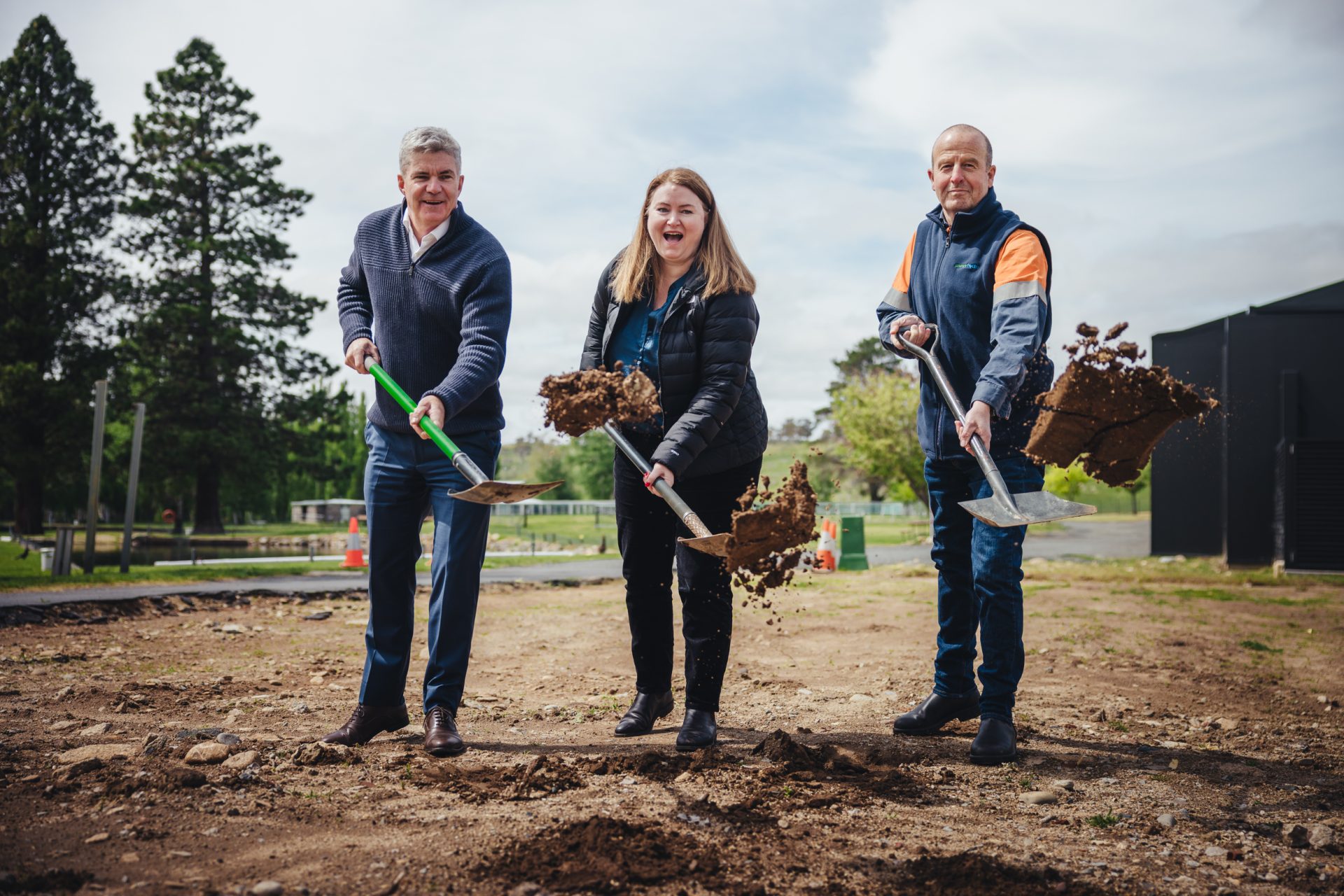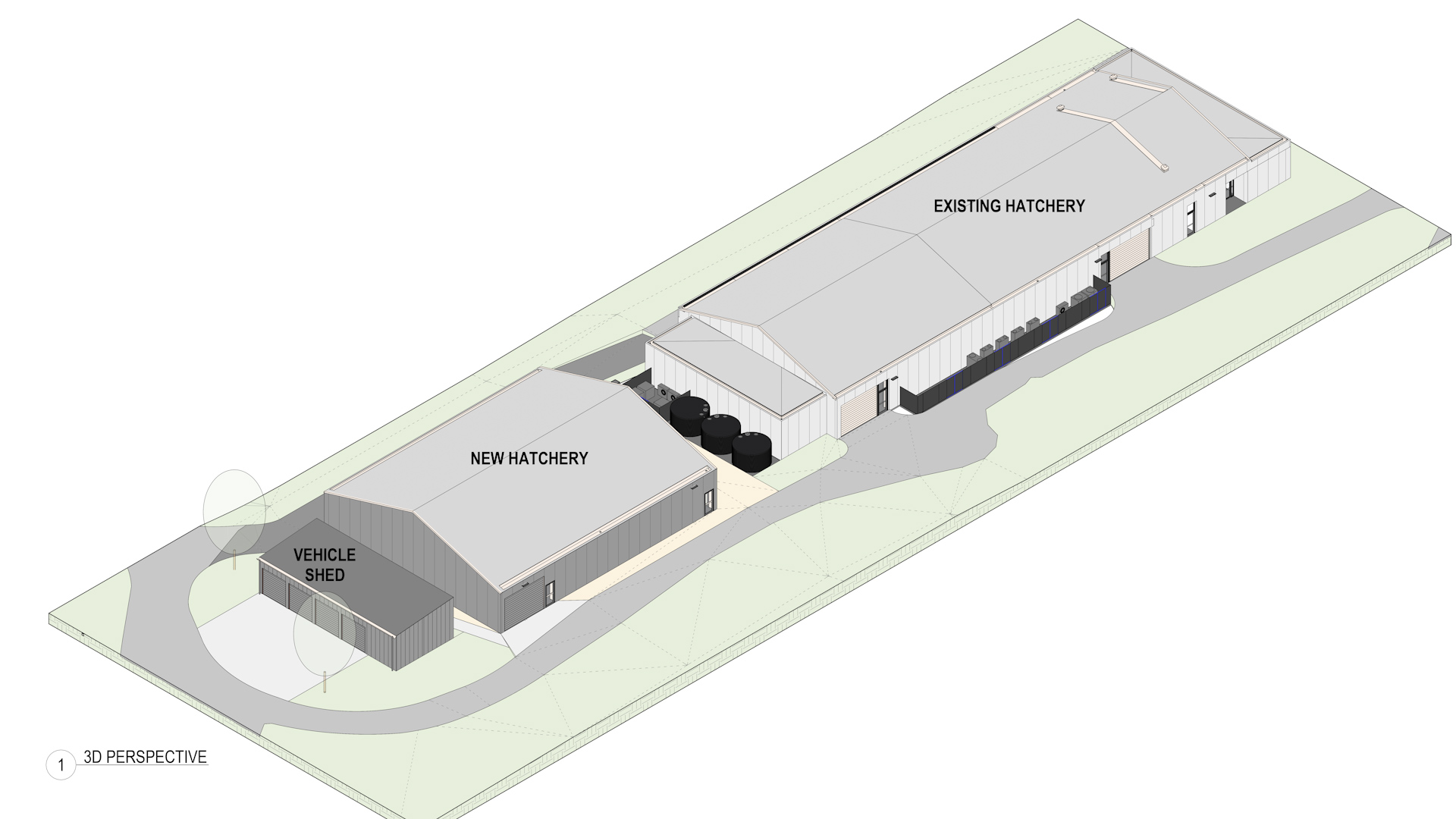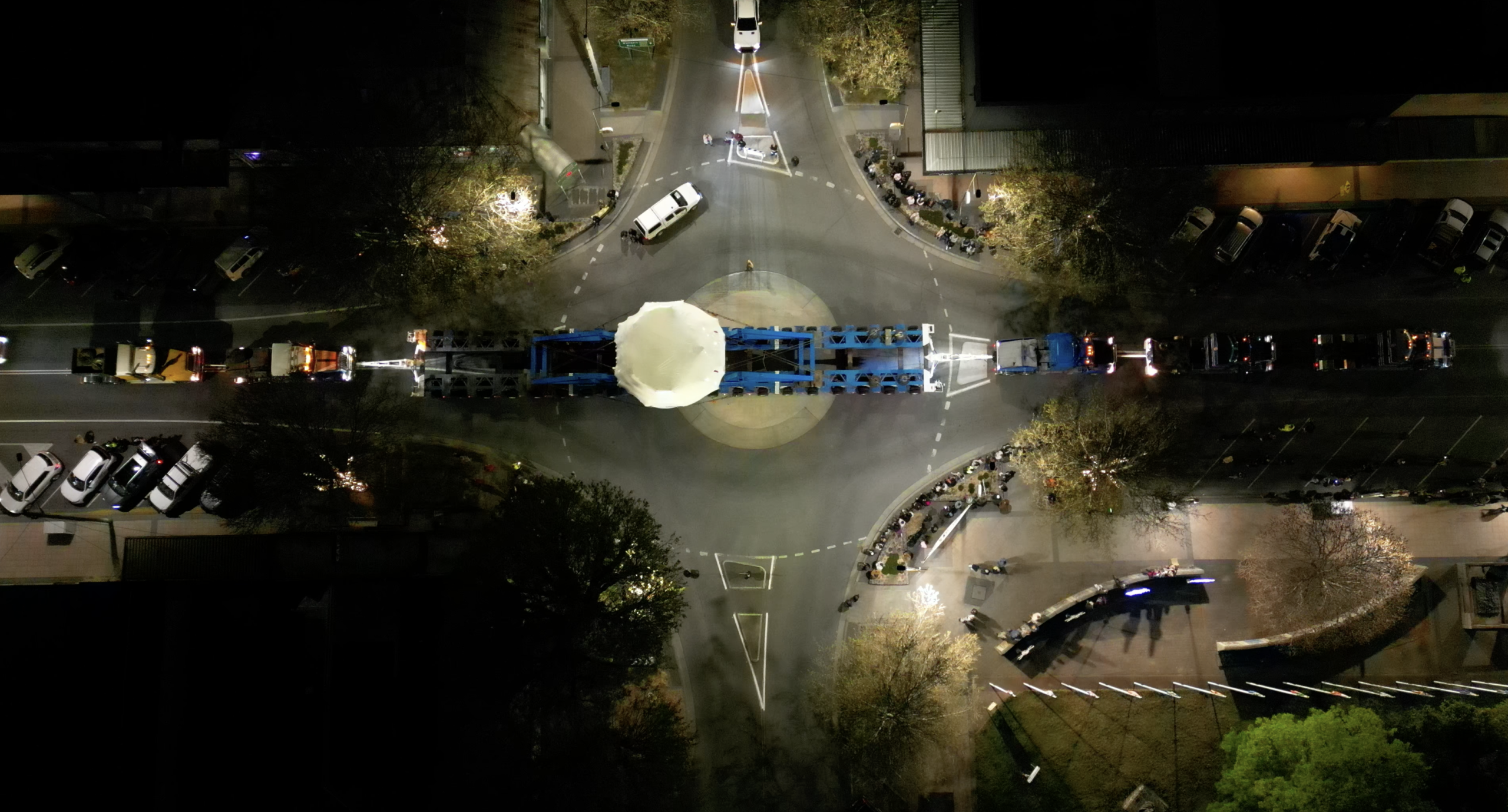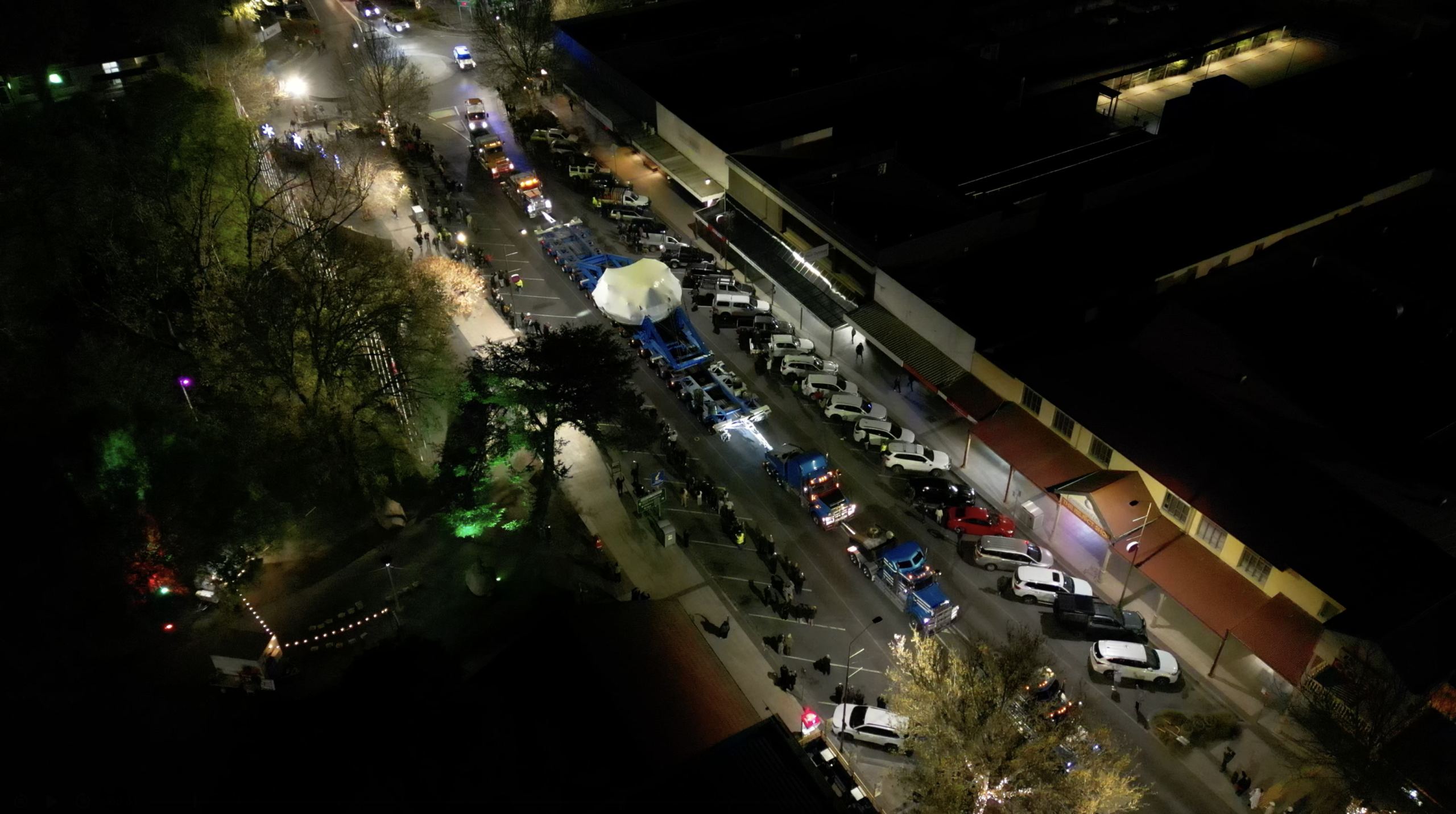The first ground has been broken on a Snowy Hydro-funded extension to a world-class trout breeding facility in the Snowy Mountains that will help safeguard the industry for years to come.
The NSW Department of Primary Industry and Regional Development has received $5 million to construct a new 462sqm building at Gaden Trout Hatchery to house state-of-the-art aquaculture systems.

Monaro MP Steve Whan, NSW Agriculture Minister Tara Moriarty and Snowy Hydro General Manager of Water, Environment and Lands General Manager Charlie Litchfield break ground at the new trout facility.
Snowy Hydro General Manager of Water, Environment and Lands Charlie Litchfield said the investment was a core part of the Snowy 2.0 Recreational Fishing Management Plan.
“While we’re not in the business of breeding fish at Snowy Hydro, our partnership with the NSW Government and the Monaro Acclimitisation Society is fundamentally important to ensure the recreational impacts of the project are effectively mitigated,” he said.
“We’re working hard to ensure we’ve got a lasting positive impact on recreational fishing in the Snowy lakes – and this collaboration is crucial.”

Gaden manager Mitch Elkins said additional units to control water temperature and filtration would significantly increase the facility’s capability to produce up to 20 tonnes of larger rainbow and brown trout annually.
“This collaboration with Snowy Hydro will not only ensure we produce bigger and better fish but it will also safeguard the trout industry for years to come,” he said.
Construction is scheduled to begin in the new year, following tender award, and is expected to be completed by the end of June 2026.



